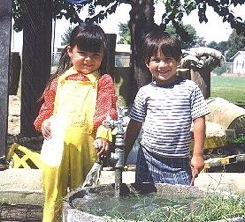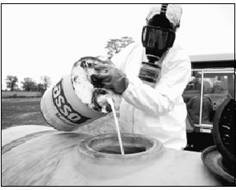
The Fair Labor Standards Act of 1938 (FLSA) as amended, sets standards for child labor in agriculture. These standards differ from those for nonfarm jobs.
To Which Agricultural Workers does the FLSA Apply?
The FLSA covers employees whose work involves production of agricultural goods which will leave the state directly or indirectly and become a part of interstate commerce.
What are the Minimum Age Standards for Agricultural Employment?
Youths ages 16 and above may work in any farm job at any time.
Youths aged 14 and 15 may work outside school hours in jobs not declared hazardous by the Secretary of Labor.
Youths 12 and 13 years of age may work outside of school hours in non-hazardous jobs on farms that also employ their parent(s) or with written parental consent.
Youths under 12 years of age may work outside of school hours in non-hazardous jobs with parental consent, but only on farms where none of the employees are subject to the minimum wage requirements of the FLSA.
Local youths 10 and 11 may hand harvest short-season crops outside school hours for no more than 8 weeks between June 1 and October 15 if their employers have obtained special waivers from the Secretary of Labor.
Youths of any age may work at any time in any job on a farm owned or operated by their parents.
What are the Hazardous Occupations in Agriculture?

Minors under 16 may not work in the following occupations declared hazardous by the Secretary of Labor:
- operating a tractor of over 20 PTO horsepower, or connecting or disconnecting an implement or any of its parts to or from such a tractor;
- operating or working with a corn picker, cotton picker, grain combine, hay mower, forage harvester, hay baler, potato digger, mobile pea viner, feed grinder, crop dryer, forage blower, auger conveyor, unloading mechanism of a nongravity-type self-unloading wagon or trailer, power post-hole digger, power post driver, or nonwalking-type rotary tiller;
- operating or working with a trencher or earthmoving equipment, fork lift, potato combine, or power-driven circular, band or chain saw;
- working in a yard, pen, or stall occupied by a bull, boar, or stud horse maintained for breeding purposes; a sow with suckling pigs; or a cow with a newborn calf (with umbilical cord present).
- felling, buckling, skidding, loading, or unloading timber with a butt diameter or more than 6 inches;
- working from a ladder or scaffold at a height of over 20 feet;
- driving a bus, truck or automobile to transport passengers, or riding on a tractor as a passenger or helper;
- working inside: a fruit, forage, or grain storage designed to retain an oxygen-deficient or toxic atmosphere; an upright silo within 2 weeks after silage has been added or when a top unloading device is in operating position; a manure pit; or a horizontal silo while operating a tractor for packing purposes;
- handling or applying toxic agricultural chemical identified by the words "danger," "poison," or "warning or a skull and crossbones on the label;
- handling or using explosives; and
- transporting, transferring, or applying anhydrous ammonia.
The prohibition of employment in hazardous occupations does not apply to youths employed on farms owned or operated by their parents. In addition, there are some exemptions from the prohibitions:
- 14 and 15-year old student learners enrolled in vocational agricultural programs are exempt from certain hazardous occupations when certain requirements are met; and
- minors aged 14 and 15 who hold certificates of completion of training under a 4-H or vocational agriculture training program may work outside school hours on certain equipment for which they have been trained.
What if state child labor standards differ from federal standards?
Many states have laws setting standards for child labor in agriculture. When both state and federal child labor laws apply, the law setting the most stringent standard must be observed.
Who enforces the federal child labor laws?
The Wage and Hour Division of the U.S. Labor Department's Employment Standards Administration enforces the laws. Employers may be fined up to $10,000 for each child labor violation.
 Print
Print Email
Email







